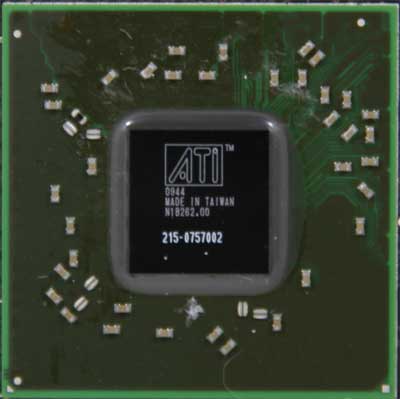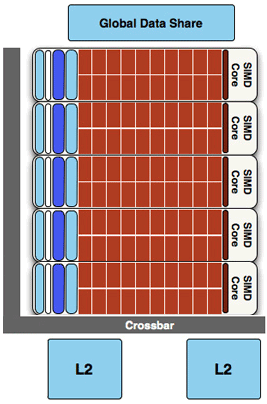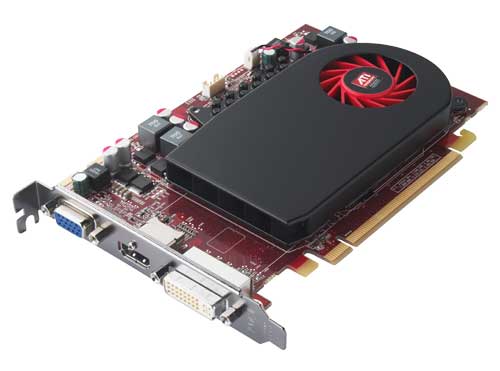AMD's Radeon HD 5670: Sub-$100 DirectX 11 Starts Today
by Ryan Smith on January 14, 2010 12:00 AM EST- Posted in
- GPUs
After a holiday break, AMD’s staggered launch of the Evergreen family picks back up today with the launch of the Radeon HD 5670. The 5670 marks the desktop launch of Redwood, the 3rd chip in the Evergreen family, designed to fit in below the Juniper chip that powers the Radeon HD 5700 series.
| ATI Radeon HD 5750 | ATI Radeon HD 4850 | ATI Radeon HD 4770 | ATI Radeon HD 5670 | ATI Radeon HD 4670 | |
| Stream Processors | 720 | 800 | 640 | 400 | 320 |
| Texture Units | 36 | 40 | 32 | 20 | 32 |
| ROPs | 16 | 16 | 16 | 8 | 8 |
| Core Clock | 700MHz | 625MHz | 750MHz | 775MHz | 750MHz |
| Memory Clock | 1.15GHz (4.6GHz data rate) GDDR5 | 993MHz (1986MHz data rate) GDDR3 | 800MHz (3200MHz data rate) GDDR5 | 1000MHz (4000MHz data rate) GDDR5 | 1000MHz (2000MHz data rate) GDDR3 |
| Memory Bus Width | 128-bit | 256-bit | 128-bit | 128-bit | 128-bit |
| Frame Buffer | 1GB / 512MB | 1GB / 512MB | 512MB | 1GB / 512MB | 1GB / 512MB |
| Transistor Count | 1.04B | 956M | 826M | 627M | 514M |
| TDP | 86W | 110W | 80W | 61W | 59W |
| Manufacturing Process | TSMC 40nm | TSMC 55nm | TSMC 40nm | TSMC 40nm | TSMC 55nm |
| Price Point | $129 - $149 | $99-$129 | $129 | $99 / $119 | $60-$90 |
AMD has been relatively straightforward in designing the Evergreen family. Each chip is half of its bigger brother. This means that the Redwood chip and the 5670 is in most ways half of a Juniper/5770: half the SIMDs (400), half the ROPs (8), half the texture units (20), etc. The core clocks are also slightly changed compared to the 5870 and 5770; here we have a core clock of 775MHz instead of 850MHz as found on those cards. So on paper, the 5670 is going to be slightly less than half of a 5770 in performance.
The one hardware unit that hasn’t been halved is the memory bus – we still have the same 128-bit GDDR5 memory bus as found on the 5770, but here it’s clocked at a 4GHz data rate. So the 5670 has a higher bandwidth-to-compute ratio than the 5770 does.


In nearly chopping Juniper in half, AMD has brought the transistor count down from 1.04B to 627M. Those transistors occupy a space of 104mm2, which is understandably smaller than the 5770, but also smaller than the RV730 GPU that powers the Radeon HD 4670, the card the 5670 replaces. This smaller die brings load power down to 61W, and idle power down to 14W.
While most of the functional units have been halved, the feature set remains otherwise unchanged from the rest of the 5000 series. DirectX 11, UVD2 video decoding, angle-independent anisotropic filtering, HDMI bitstreaming, and supersample anti-aliasing are all accounted for. Eyefinity is also here, using a slightly different port configuration to continue bringing support for 3 monitor Eyefinity.

At $99, the 5670 is intended to stake out the all-important sub-$100 position for video cards, which is a big price point for price-sensitive buyers and OEMs. Bear in mind that the entire sub-$100 market encompassed 2/3rds of all video card sales last quarter, according to AMD and Mercury Research. Given the low transistor count and small die size of the 5670, we expect that AMD will have a lot of price latitude to work with going forward – as 40nm production costs and GDDR5 costs come down, this board should be cheaper to make than the 4670 ever was.
AMD considers the chief competition for this board to be the NVIDIA GeForce GT 240, which we reviewed last week. However this price point also brings AMD into competition with last year’s parts: the GeForce 9800 GT and Radeon 4850. The former is in good supply, and the latter still available enough at this moment to be a viable alternative. As we’ll see, this is by no means a slam-dunk for AMD today.
Coming from CES, we had a chance to talk to vendors about the 40nm TSMC situation, which has been a thorn in AMD’s side since the launch of the 4770 last year. What we’re hearing is that the situation is improving (which is why 5800 series cards are finally usually in stock) but that it’s still not as good as everyone would like. For this launch there are 50k+ cards, which should be more than enough to satisfy demand. We don’t expect there to be any supply issues with the 5670.










73 Comments
View All Comments
Spoelie - Friday, January 15, 2010 - link
Because the GPU can never truly be isolated, the CPU/memory/buses need to perform some work too to keep the GPU fed with data and instructions to process.Slaimus - Thursday, January 14, 2010 - link
It is not too long ago that the Geforce 6200 debuted at $150. Low end gaming cards are slowly pickup up prices again.dagamer34 - Thursday, January 14, 2010 - link
When do the low profile 5650/5670 cards come out? I've been waiting one for my HTPC to bitstream Blu-ray HD codecs.SmCaudata - Thursday, January 14, 2010 - link
Unless you already have an HTPC why would anyone get this card. If building a new HTPC you could get a Clarkdale to bitstream the audio-codecs.Also...why do we care if it is bitstreamed? I have a reciever that can decode this but it doesn't matter if the digital information is converted to PCM before or after the HDMI cable. The only advantage is to see those lights on the front of my reciever...
papapapapapapapababy - Thursday, January 14, 2010 - link
future what? dx11 at 5fps? no thanks ati, remember the 4770? that was a good sub $100 card, (thanks) this crap is overpriced, $45 or bust.TheManY2K3 - Thursday, January 14, 2010 - link
Ryan,I don't see any of the applications at 12x10 include data for the 8800GT, however, you are comparing the 8800GT to the HD5670 in most applications.
Could you include the 8800GT in the 12x10 data, so that we can accurately gauge the performance of the HD5670?
Ryan Smith - Thursday, January 14, 2010 - link
The 8800 GT data was originally collected for past articles, where we started at 16x10. The 8800 GT isn't part of my collection (it's Anand's) so I wasn't able to get 12x10 data in time for this article.silverblue - Thursday, January 14, 2010 - link
It's probably fair to point out that, in most tests, the 5670 is very close to the 8800, and as such listing it may not mean anything. However, the 1280x1024 tests are also without AA - it might be nice to see the effect of turning AA on with this oldie but goodie as compared to the more modern competition, so including it may make sense. You may think that the higher core clock of the 5670 would give it an advantage without AA but if it goes anything like Batman, this would probably be an incorrect assumption as well.pjladyfox - Thursday, January 14, 2010 - link
Last I looked ANY Radeon card with the x5xx, x6xx, or x7xx model number was denoted as a mainstream card which is clearly noted here:http://en.wikipedia.org/wiki/Radeon#Product_naming...">http://en.wikipedia.org/wiki/Radeon#Product_naming...
By that definition that means that these cards were designed to run in systems that have power supplies from 350 to 400w, support HD quality video, and support games at a resolution of no higher than 1440x900 at medium quality settings with 2x AA and 8x anisotropic filtering. By putting them at settings that most will not run these cards at it makes these results for the most part worthless.
I mean who cares how these cards run at 1920x1200 at high detail settings since we already know they're going to fail anyway? I'm more interested in how these run with all the details on at say 1440x900 or possibly 1680x1050 which are the more common widescreen monitors most people have.
For that matter where are details about how these cards compare running HD quality video, if the fan speed can be controlled via speedfan, or even if they have fixed some of the video quality issues like black crush when outputting via HDMI?
Ryan Smith - Thursday, January 14, 2010 - link
We traditionally run every game at 3 resolutions, particularly since some games are more GPU-intensive than others. Based on the 12x10 performance, I decided that 10x7 would be silly and instead went up a level to 19x12 - a few games were actually playable even at those high resolutions.16x10 is accounted for, and 12x10 is close enough to 14x9 that the results are practically the same.
HD Video: All the 5000 series cards, except perhaps the Cedar are going to be exactly the same.
Fan speed: Can be modified (I use it to cool down the cards before extraction after running FurMark)
Black Crush: I honestly have no idea